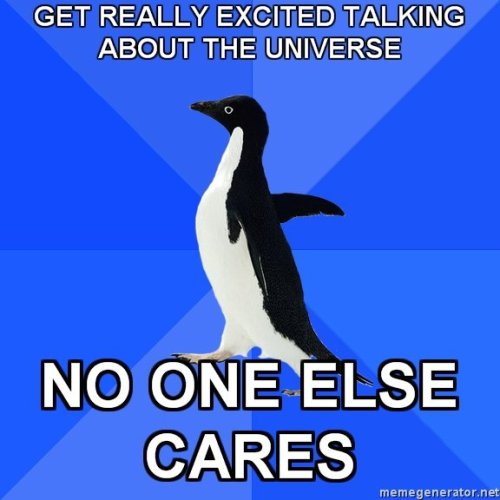The main objective of this installation is to give to the observer a sense of how small planet Earth is and in what immense desert of space we are floating. This will help the audience to understand and appreciate our home planet, as well as rethink how their current worldview aligns with this (new) perspective. I could not express more precisely this overwhelming sense of smallness as Carl Sagan did in his book “Pale blue dot”:
“That's here. That's home. That's us. On it, everyone you ever heard of, every human being who ever lived, lived out their lives. The aggregate of all our joys and sufferings, thousands of confident religions, ideologies and economic doctrines, every hunter and forager, every hero and coward, every creator and destroyer of civilizations, every king and peasant, every young couple in love, every hopeful child, every mother and father, every inventor and explorer, every teacher of morals, every corrupt politician, every superstar, every supreme leader, every saint and sinner in the history of our species, lived there on a mote of dust, suspended in a sunbeam.”
Installation will consist of five sculptures representing the Sun and four nearest planets - Mercury, Venus, Earth and Mars. Together they will simulate the central part of our Solar System. All sculptures will be made to the scale of actual objects. Meaning that the Sun will be approx. 3 meters (~ 10 ft.) and the planets approx. 3 centimeters (~ 1 in.). The Sun will be represented by geodesic sphere suspended on a vertical axis which will allow observers to rotate it. Faces of the sphere will be made of reflective material which during the day when rotating will produce a blinking effect by reflecting the sunlight. During the night the “Sun" will be illuminated by LED's installed on the edges of the sphere. Planets will be placed in translucent material to create an illusion that they are floating in the space. These cylindrical containers will be placed on poles approx. 1 meter in height (~ 4 ft.) and illuminated from the bottom of the container during the night. Most likely, the observer will first approach “The Sun”, where he or she would get visual clues to visit the planets. To maintain the scale of the model, the planets would be placed 410 (Mercury), 765 (Venus), 1057 (Earth) and 1611 (Mars) feet away from the “Sun". Each planet model will have a description plaque with information about that planet. Close to the model there will be a directional sign pole pointing to the nearest planet models. Similar sign poles will be placed along the orbit of the earth indicating 12 months.
In addition to the ability to rotate the “Sun”, the main interactive element of installation will be "rays of light". These will be placed near the “Sun”. With visual clues the observer will be encouraged to become a "bringer of light" and to deliver the ray of light to the Earth. The ray will be made of a transparent plastic stick, approx. 2 ft. in length. One end will be colored in yellow, another will be colored in green. Approx. 1,000 ray sticks will be placed vertically into the special platform surrounding the Sun, the green end down, making only the yellow part visible, which will create an illusion of a yellow field. When the ray is brought to the Earth, yellow end will be put in to the ground and only green end will be visible, creating a green field around the Earth. This interaction will help to feel the real distance between Earth and the Sun. Additionally, participant will be able to compare sizes of the Sun and orbiting planets. For most masochistic attendees, the Earth’s full orbit will be marked around the Sun, so they can follow the Earth’s path, which we together with our planet are traveling through the space each year. Markings of corresponding months will be put along the orbit of the Earth, so when traveling the orbit participants can come across the dates important to them or others, for example, March 20th, spring equinox.
Sculptures of the planets will be illuminated using LED's from the bottom of the transparent container. LED's will be powered by batteries sufficient enough to last for the duration of the event (night time only, activated by the light sensor). Sphere representing the Sun will have its edges decorated with LED's, which will make the sphere visible in the night time. Sign poles for the months on the orbit of the Earth will not be illuminated, but they will have reflectors on them, which will warn anyone approaching the sign in the night. Since each component of the installation can be assembled and put into place in less than one day, there will be no need for special construction set lighting, as the model will have a built-in lighting when completed.
Sphere framework will be made of steel or aluminium. Faces of geodesic sphere will be made of reflective plastic. Base of the Sun will be made of wood and "rays" will be made of transparent plastic sticks, painted with Fluorescent paint. Models of the planets will be placed on poles made of steel. Transparent container will be made of glass-clear polyester resin and planets will be made from ceramics, covered with enamel. Signs and poles for the months will be made from wood.
O čia yra geriau matomi paveiksliukai. O pabaigai dar šiek tiek saviironijos :




osom!
AtsakytiPanaikintiNerealu, Vinchento. Nerealu. Labai liuks užmojai. Gal eksponuosi ir kur arčiau namų, nes lauksim. O kai kuriem išprotėjusiem diedam jau parekomendavau aplankyti tave dykumoj :)
AtsakytiPanaikintiEvita (aukščiau :)
AtsakytiPanaikinti